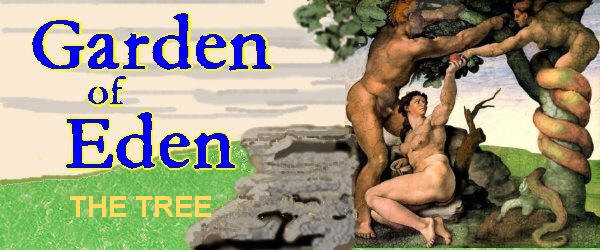Tree of the Knowledge of Good and
Evil - what is it?
Most of us know that the first
parts of Genesis art not historical, but mythological.
Even liberal Christians tell us that there was no actual
tree in the physical sense, but that the story of Genesis is
an allegory about the development of man and that the tree
represents individual free will.
But can we determine which verses are historical and which
are mythological? If we are just going to go through the
Bible and say this verse is historical and that verse is
mythological, we might as well throw the Bible away and
write our own book.
We do have many historical
records and ancient documents we can refer to help us make
this important determination, but when it comes to creation,
the Bible is the oldest book and it stands by itself.
Remember how language has changed over the past 3500 years
since Genesis was first put in print. Through the years,
many elements from Greek and Persian mythology and European
Christianity have crept into the interpretations and
translations. In order to understand the text, we must go to
the original Hebrew text and read it unshackled by any
traditions or preconceptions. Luckily most of this work has
already been done for us. The nineteen-century Hebrew
scholar Fabre d’Olivet has already prepared such a
translation. His translation is probably the best available,
but, since it is only a raw text, it does require
transliteration and polishing to make it readable. The
following verses are based upon d’Olivet’s 1815 translation:
And in the lower parts of the
adamic, the Eternal produced all the systems of perception
and growth, including . . . .a system of lives and a system
of experiencing desire and aversion. And the Eternal told
humanity, "You may freely partake of every syttem here but
you should not partake of the system of desire and aversion,
for when you do, you will become corrupted. - Genesis 2:9,
16:17
The original Hebrew is quite
different from the traditional and orthodox versions. For
comparison, check the above against your standard King James
version of the Bible.
We find that of tree the Tree of the Knowledge of Good and
Evil wasn’t a physical tree at all. These verses speak about
system of human activity which the text calls "a system of
experiencing desire and aversion."
Not only was there no tree, there was no "Garden of Eden"
either. Instead all the activity takes place in the
pre-physical realm which is called the adamic. Nothing else
in these verses is physical either..
Though there was no real, physical tree, but instead a
system of perception, the corrected translation tells us
that God warned (but did not prohibit) Adam of the
consequences of participating in this system.
Of course, Adam partook of the system of desire and aversion
anyway and suffered the consequences.
Both masters, Jesus and Buddha, taught their disciples to
avoid extremes, to take the middle path, to tread the narrow
way between good and evil, desire and aversion. When we walk
the narrow path avoiding both desire and aversion, we are no
longer eating of the fruit of the "Tree of Knowledge of Good
and Evil".
|
|



